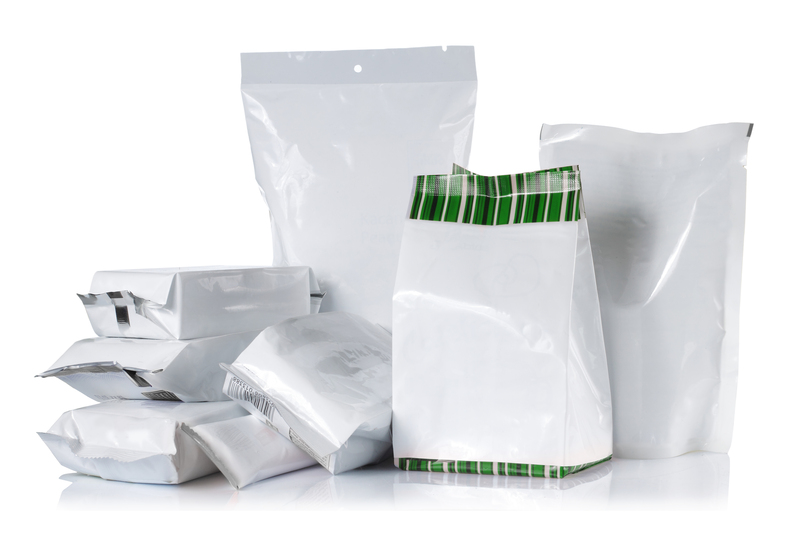The Essential Role of Waste Clearance in Waste Management
In today's fast-paced, consumption-driven world, the challenge of responsible waste disposal has never been more pressing. Waste clearance--the organized removal and processing of unwanted or discarded materials--forms the backbone of successful waste management strategies. Whether for households, businesses, or municipalities, efficient waste clearance is crucial for environmental protection, public health, and sustainable living. In this article, you will discover the essential role of waste clearance in waste management, why it matters, the best practices, and innovative approaches adopted globally.

Understanding Waste Management and Waste Clearance
Waste management is a broad term encompassing the collection, transportation, processing, recycling, and disposal of waste materials. Its main goal is to minimize the adverse impacts of waste on human health and the environment. Within this framework, waste clearance plays a fundamental role--serving as the initial action that determines how and where waste will be handled.
The Definition of Waste Clearance
Waste clearance refers to the systematic removal of waste from homes, businesses, construction sites, public spaces, and other locations. This begins with waste segregation and collection, followed by transportation to treatment plants, recycling centers, or landfills. The quality and efficiency of waste clearance directly affect the entire chain of waste management.
Types of Waste Requiring Clearance
- Household waste: Everyday rubbish generated from homes, such as food scraps, packaging, and old furniture.
- Commercial waste: Waste produced by shops, offices, and industries, including paper, plastics, and electronic devices.
- Construction and demolition waste: Rubble, concrete, wood, and other debris from building sites.
- Hazardous waste: Materials that pose significant risks to health and the environment, like batteries, chemicals, and medical waste.
- Green waste: Organic waste derived from gardens and landscaping activities, including leaves, branches, and grass clippings.
Why Is Waste Clearance So Vital in Waste Management?
Environmental Protection
One of the primary reasons waste clearance is essential is its direct impact on the environment. Neglected and poorly managed waste can leach toxic substances into soil and water, contribute to air pollution, and harm wildlife. Timely and proper waste removal ensures that recyclable materials are processed, organic waste is composted, and hazardous materials are destroyed or neutralized appropriately.
Public Health and Safety Benefits
Accumulated waste is an open invitation to disease-carrying pests such as rats, flies, and mosquitoes. The spread of pathogens from improperly handled waste can result in serious health outbreaks. Effective waste clearance mitigates these risks by keeping communities clean, reducing the spread of diseases, and ensuring a safer living and working environment.
Supporting a Circular Economy
Modern waste clearance services are not just about removing rubbish--they are integrated with recycling and resource recovery efforts. By separating, collecting, and transporting recyclable materials efficiently, waste clearance supports the circular economy, wherein resources are reused, remanufactured, and recycled to minimize landfill use and conserve natural resources.
The Stages of Effective Waste Clearance
1. Waste Assessment and Segregation
Every effective waste management program starts with a careful assessment. Identifying the types and quantities of waste helps determine the best clearance method. Segregation--separating recyclable, compostable, hazardous, and general waste--is vital for maximizing resource recovery and ensuring safe disposal.
2. Collection and Storage
After segregation, waste must be stored securely to prevent contamination, odors, and pests. Different waste types require specialized bins or containers. Regular collection schedules help maintain hygiene and stop bins from overflowing.
3. Transportation
Waste is then transported to specific processing facilities. Responsible waste clearance providers use dedicated vehicles and follow strict regulations to prevent spillage, leaks, or illegal dumping during transit.
4. Processing, Recycling, and Disposal
At this stage, recyclable materials are recovered and processed, organic waste is composted or sent for energy recovery, and non-recyclables are deposited in engineered landfills. Hazardous waste follows specialized disposal protocols to avoid environmental harm.
Modern Methods and Innovations in Waste Clearance
The evolution of waste clearance technologies and methods is revolutionizing how societies handle their waste. Below are some of the most impactful innovations:
- Smart Waste Bins: IoT-enabled bins notify clearance teams when they need to be emptied, optimizing collection routes and minimizing carbon footprints.
- Automated Sorting: AI-driven sorting facilities can separate recyclables more efficiently than ever, reducing contamination and increasing recovery rates.
- Zero Waste Initiatives: Some communities aim for near-total recycling and reuse, requiring advanced waste clearance and rigorous segregation at the source.
- Alternative Fuels: Trucks powered by biofuels or electricity are reducing the environmental impact of waste transportation.
- Mobile Apps: Many waste clearance companies offer apps to schedule pickups, report illegal dumping, or request specialized removal services instantly.
Challenges in Waste Clearance and Management
Increasing Waste Volumes
Rapid population growth and urbanization mean that cities face ever-increasing volumes of waste. This places significant pressure on existing waste clearance infrastructure, necessitating continual investment and innovation.
Illegal Dumping and Fly-Tipping
Improper waste disposal--commonly known as 'fly-tipping'--can overwhelm local authorities, damage public spaces, and pollute the environment. Effective clearance solutions must be supported by strict regulations and deep community engagement.
Lack of Public Awareness
Many individuals and businesses remain unaware of proper waste segregation and clearance methods. Education campaigns are essential for fostering responsible waste behavior and supporting efficient clearance operations.
The Role of Professional Waste Clearance Services
For safe and thorough waste removal, many households and businesses rely on professional waste clearance companies. These services bring:
- Expertise: Professionals understand regulations and the safest, most sustainable clearance methods.
- Specialized Equipment: From hazardous waste containers to high-capacity lorries, professional providers are fully equipped.
- Regulatory Compliance: Licensed companies ensure your waste is managed in accordance with environmental laws.
- Time and Cost Savings: Outsourcing clearance allows individuals and businesses to focus on their core activities.
- Responsible Disposal: Reputable companies prioritize recycling and eco-friendly disposal, minimizing landfill use.
How to Choose the Right Waste Clearance Service
- Licensing and Accreditation: Ensure the company is authorized and follows strict environmental guidelines.
- Range of Services: Select a provider that caters to your specific clearance needs, from general rubbish to hazardous waste.
- Recycling Commitment: Ask about their recycling rates and sustainability practices.
- Customer Reviews: Look for testimonials or case studies to assess service reliability and quality.
- Transparent Pricing: Opt for companies offering clear, upfront pricing without hidden charges.
Waste Clearance and Sustainable Development
Waste clearance is a linchpin of broader sustainability goals. The UN's Sustainable Development Goals (SDGs) emphasize the importance of responsible consumption, waste reduction, and ecosystem protection. Efficient waste removal supports these objectives by:
- Reducing landfill dependence: Accelerating recycling and composting to prevent environmental degradation.
- Lowering greenhouse gas emissions: Diverting organic waste from landfills minimizes methane emissions.
- Promoting resource conservation: Enabling the recovery and reuse of materials sustains finite resources.
- Creating green jobs: The waste clearance and management sector employs millions worldwide.
- Enhancing community wellbeing: Clean, safe neighborhoods lead to better health outcomes and quality of life.
Best Practices for Individuals and Businesses
- Practice source segregation: Separate recyclables, compostables, and hazardous materials from general waste.
- Reduce waste generation: Opt for reusable products and avoid unnecessary packaging.
- Comply with local guidelines: Familiarize yourself with regional waste disposal requirements.
- Utilize official waste collection services: Schedule regular pickups and avoid unlicensed operators.
- Engage in community clean-ups: Volunteer or organize neighborhood waste clearance initiatives.

Legislation and the Future of Waste Clearance
Waste clearance is increasingly shaped by government policy and evolving legislation. From bans on single-use plastics to extended producer responsibility (EPR) regulations, both businesses and consumers face new incentives and requirements to reduce, sort, and clear waste responsibly.
The future of waste clearance lies in further innovation, public-private partnerships, and greater community awareness. Emphasis will likely grow on:
- Advanced sorting and recycling technologies
- On-demand collection models
- Greater producer and consumer responsibility
- Enhanced traceability and reporting tools
Conclusion: Waste Clearance as the Cornerstone of Waste Management
In summary, effective waste clearance is the foundation upon which all successful waste management systems are built. Without organized and responsible clearance, other waste management opportunities--recycling, composting, energy recovery--break down or become less effective. By understanding the significance of waste clearance, embracing best practices, and supporting innovation, individuals and organizations can help build a cleaner, healthier, and more sustainable future.
Whether you are a homeowner, business manager, or policymaker, recognizing the essential role of waste clearance empowers you to make smarter choices for the environment and community. Only through collective action and commitment to responsible waste removal can we rise to meet the waste challenges of the 21st century.
Related Keywords: rubbish removal, junk clearance, responsible waste disposal, eco-friendly waste clearance, waste removal services, sustainable waste management.